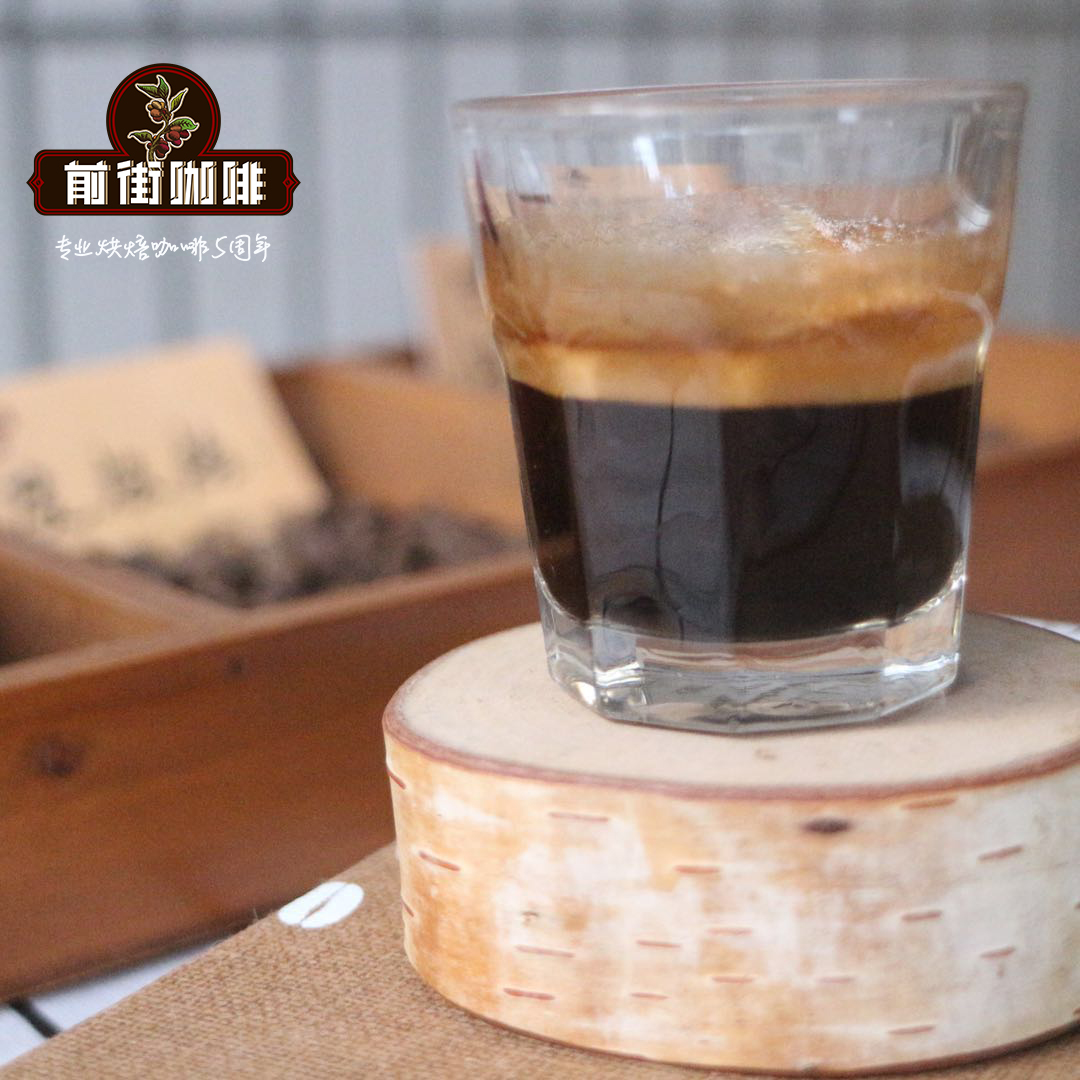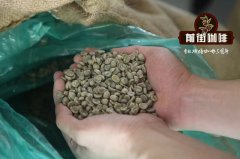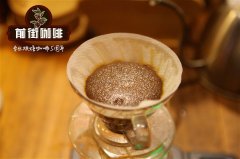Basic knowledge of coffee that you have to read | basic knowledge of hand-made coffee _ recommended for getting started with coffee beans

Professional coffee knowledge exchange more coffee bean information please follow the coffee workshop (Wechat official account cafe_style)
Drink black coffee without sugar and milk
It's a huge change.
| | the third Coffee Revolution |
The first wave of coffee arose from instant coffee, and the Chinese coffee journey began in the sweet taste of cream companions.
The second wave of coffee is the rise of the chain coffee market, followed by the emergence of small cafes with different styles. Most of the second wave of cafes sell concepts and the environment, while ignoring the quality of coffee itself. All kinds of fancy coffee cover up the taste of coffee itself.
The third wave of the Coffee Revolution, a group of advocates who really love boutique coffee, began to offer single coffee (single producing area / but to manor / single variety), using self-baked coffee beans, roasting degree also changed to medium-light roasting. They insist on providing boutique coffee, spread authentic coffee culture, have exclusive cultural meaning, provide coffee directly from the country of origin, and its exclusive culture and technology, in order to bring coffee back to its true quality.
| | Fine coffee Specialty Coffee |
It was first proposed by Ms. Erna Knudsen, who is known as the "godmother of boutique coffee," in the Tea and Coffee monthly in 1974, highlighting that "only in the most favorable microclimate and soil and water can boutique coffee with unique flavor be cultivated." the aim is to distinguish it from the bulk commercial coffee on the New York Futures Exchange. In 1972, Ms. Knudsen co-founded the American Fine Coffee Association (SCAA) with six others, including Donna Shaughuo. The word "specialty coffee" became a global language.
SCAA's definition of the concept of fine coffee:
Carefully select the most suitable variety and plant it in the altitude, climate, soil and water environment that is most conducive to the development of coffee flavor.
Careful washing and sun processing, select the most advanced raw beans without defects, and deliver them to customers with zero defects in the transportation process.
After the baker's superb craftsmanship, it leads to the richest flavor of the region.
And then in the recognized way of extraction, make delicious coffee.
The regional flavor, that is, the difference between soil, variety, climate and soil and water, creates different coffee flavor, which is the soul of coffee in high-quality producing areas. In short, boutique coffee should be a high-quality coffee with "good raw beans, good roasting and good extraction".
| | Commercial beans and fine beans |
Today, 70% of the coffee beans produced in the world are Arabica Arabica, divided into Picard, Bourbon, and 30% are Robster Robusta. The overall quality of Arabica is higher than that of Robster, but Arabica's disease resistance is weak, so the proportion of Arabica in the consumer market is much smaller than that of Robsta. And not all Arabica beans can make boutique coffee, which has to be scored by strict cup tests.
The American Fine Coffee Association points out that through the comprehensive cup test (blind test), those with a score of more than 80 can be defined as boutique coffee beans. Blind test score less than 80, can be classified as commercial beans, packaging and transportation process is long, freshness can not be guaranteed.
However, this standard only applies to washed Arabica coffee and is not comprehensive, so now "boutique beans" are usually understood as single beans with high quality and proper handling, which can be traced back to the origin of the variety and have a unique flavor.
| | well-known individual coffee |
Blue Mountain: produced in the high mountains of Jamaica, coffee treasures, taste sweet and soft, not bitter but slightly sweet, very little production, expensive.
Mocha: produced in Ethiopia, small beans, strong sour, slightly alcoholic, spicy, special flavor, is a famous high-quality coffee.
Yega Chuefei: from Ethiopia, with strong aromas of jasmine, lemon or lime acid, and sweet or tea aromas of peaches and almonds.
Crystal Mountain of Cuba: adjacent to the Blue Mountains of Jamaica, the fragrance is soft, the concentration is moderate, and there is almost no acid taste.
Manning: produced in Sumatra, with strong aroma, bitter taste, syrup and chocolate taste, not sour taste.
Panamanian rose: the brightest, richest and most strongly fragrant coffee variety, with rich aromas ranging from berries and citrus to mango, papaya and peach.
| | Baking should be scientific |
80% of the taste of coffee depends on roasting, and roasting must have the rigor of scientists, which can skillfully bake out the aroma, sour taste and bitterness of raw coffee beans, ensuring the carbonization of sugar and carbohydrates in coffee during roasting, thus producing coffee oil, showing the greatest characteristics of coffee. Good baked beans are greatly expanded, the surface is wrinkle-free and the luster is symmetrical.
Baking degree:
Can be divided into light, medium and deep three categories, light baking acidity is strong, deep baking acidity is gradually lost, bitterness is aggravated. Now boutique coffee is more light to moderate roasting to show the taste of the coffee bean itself.
After baking:
Freshly roasted coffee beans need to exhaust, release carbon dioxide, 36 hours before production, about 4 days to reach the highest flavor, surrounded by the limit, shallow roasted coffee beans can be extended for a week, deep-roasted coffee beans can be drunk within 10 days, and can be thrown away in more than three weeks.
| | exclusive exposure of hand-drawn step map of hand-made coffee |
Making coffee by hand is a ritual.
Slowly drip filtration
The rich and light taste of extracted coffee
The greatest charm of hand flushing
It is also because it is full of uncertainties.
Necessary tools
| | filter cup: the filter cup has single hole, double control, three hole and multi-hole. The more holes the filter cup has, the higher the flushing skill is required. |
| filter paper: coffee beans are of higher quality and cleanliness. In order to highlight the flavor, filter screen or filter paper is the best choice.
| | hand punch pot: a small mouth pot, which is convenient to control water flow and direction. |
| hand-made pot: choose as you like.
Hand flush Tips
| | ratio of water beans: generally speaking, 200ml coffee requires about 15-20g coffee beans. |
| | filter cup heating: pour hot water into the filter cup before brewing coffee, wet the filter paper to remove the smell of the filter paper, and heat the filter cup and the coffee cup. |
| steaming: take the center of the coffee powder as the center, gently add water to the coffee powder by hand to draw a circle, and submerge the coffee powder for about 20-25 seconds. The water flow here is too fine.
| the first brewing water injection accounts for 60% of the total coffee water, the second water injection accounts for 30%, and the third water injection accounts for 10%.
Extraction completed
Enjoy
● entry Coffee Bean Brand recommendation
The entry-level coffee beans of Qianjie Coffee roasting: Yega Chuefei Coffee, Panamanian Flower Butterfly Coffee, Indonesian Manning Coffee and so on are fully guaranteed in terms of brand and quality. And more importantly, the performance-to-price ratio is extremely high, a pack of half a pound 227 grams, the price is only 80-90 yuan. According to the calculation of 15 grams of powder per cup of hand-brewed coffee, 15 cups of coffee can be made in a bag, and each cup of coffee costs only about 6 yuan, which is very cost-effective for coffee shops to sell dozens of yuan a cup.
Qianjie coffee: Guangzhou bakery, the store is small but a variety of beans, you can find a variety of unknown beans, but also provide online store services. Https://shop104210103.taobao.com
Important Notice :
前街咖啡 FrontStreet Coffee has moved to new addredd:
FrontStreet Coffee Address: 315,Donghua East Road,GuangZhou
Tel:020 38364473
- Prev

How much is coffee beans? How much is coffee beans?
Professional coffee knowledge exchange More coffee bean information Please pay attention to coffee workshop (Weixin Official Accounts cafe_style) Today, we have prepared some content shared by hand-brewed coffee beginners.● Before brewing: A. About coffee beans In the introduction of introductory coffee beans provided by the roaster, it is necessary to pay attention to the roasting degree. Shallow, meaning the flavor orientation of the beans will be biased
- Next

Discussion on baking degree | is it easy to preserve coffee beans by light baking or deep baking? How to drink deep-baked coffee beans
Professional coffee knowledge exchange more coffee bean information Please follow the topic studied by the coffee workshop (official Wechat account cafe_style) today: coffee beans are easy to be preserved by light roasting or deep roasting. To find this answer, we need to do an experiment: light roasted beans or deep roasted coffee beans, which takes longer to exhaust when steaming? Just compare the coffee beans with different roasting degrees.
Related
- Beginners will see the "Coffee pull flower" guide!
- What is the difference between ice blog purified milk and ordinary milk coffee?
- Why is the Philippines the largest producer of crops in Liberia?
- For coffee extraction, should the fine powder be retained?
- How does extracted espresso fill pressed powder? How much strength does it take to press the powder?
- How to make jasmine cold extract coffee? Is the jasmine + latte good?
- Will this little toy really make the coffee taste better? How does Lily Drip affect coffee extraction?
- Will the action of slapping the filter cup also affect coffee extraction?
- What's the difference between powder-to-water ratio and powder-to-liquid ratio?
- What is the Ethiopian local species? What does it have to do with Heirloom native species?

